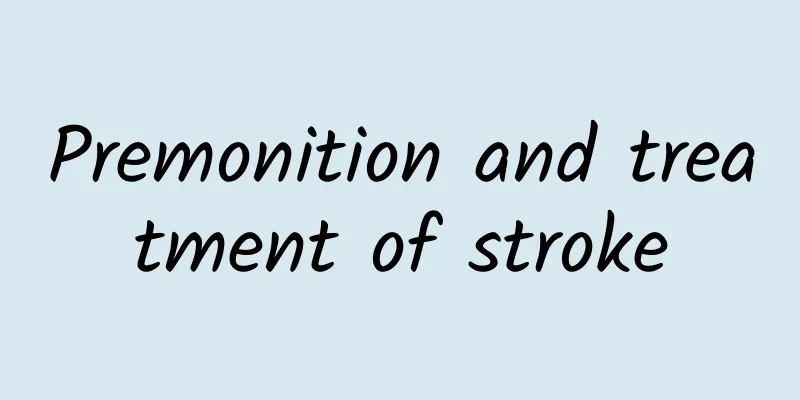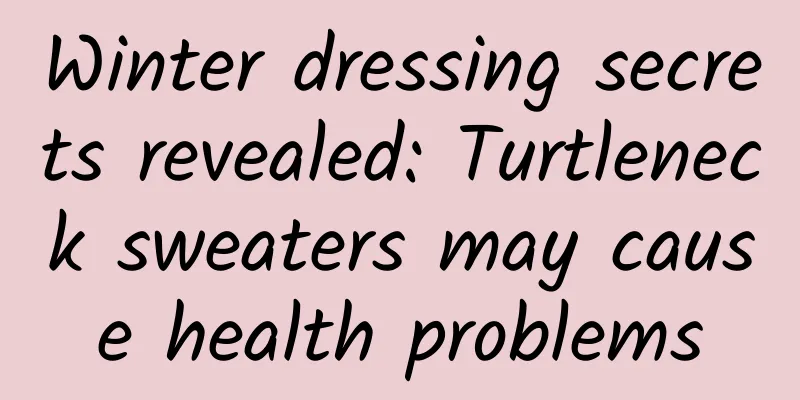Premonition and treatment of stroke

|
Author: Chen Yin Shenzhen Traditional Chinese Medicine Hospital Reviewer: Cao Xuemei, Chief Physician of Shenzhen Traditional Chinese Medicine Hospital If one day you suddenly find yourself having a severe headache, wanting to vomit, wanting to sleep, feeling numbness on one side of your limbs or face, having difficulty speaking, or seeing things blurry and with shadows, having tinnitus, having trouble hearing, being unable to hold things steady, walking unsteadily, and falling easily, please be highly alert. Because these symptoms are the brain's distress signals, indicating that a stroke is about to occur or is already in the early stages. At this time, if you are alone, how can you save yourself? 1. Try to stay calm and don’t panic Call for help immediately: If you find that you may be having a stroke, call the emergency number (120) immediately and inform the dispatcher of your symptoms, location and contact information. Time is of the essence in the treatment of stroke. The earlier you get treatment, the better the prognosis. At the same time, let your family or friends know about your situation as soon as possible so that they can help deal with it. Figure 1 Copyright image, no permission to reprint 2. What to do when waiting for rescue Correct posture: Find a safe place to lie down to avoid falling. Lie flat and tilt your head to one side as much as possible, which helps keep the airway open and prevent vomit from being aspirated. If possible, use a pillow or other object to raise your head to relieve head pressure. Avoid movement: While waiting for help, try to avoid moving or exerting force on your own to avoid aggravating the condition. If you must move, do it slowly with the help of family or friends. Record time: Remembering the time when symptoms occur is very important for subsequent treatment and evaluation. 3. Medical treatment Rapid transfer: When emergency personnel arrive, they will quickly assess your condition and take necessary first aid measures, and then quickly transfer you to a nearby hospital for treatment. Medical evaluation: Upon arrival at the hospital, your doctor will conduct a comprehensive medical evaluation, including a neurological examination, imaging tests (such as CT, MRI), etc., to determine the type and severity of the stroke. Targeted treatment: Based on the evaluation results, the doctor will develop an individualized treatment plan. For ischemic stroke, thrombolytic therapy, antiplatelet therapy, or anticoagulant therapy may be used; for hemorrhagic stroke, blood pressure control and intracranial pressure reduction may be required. Figure 2 Copyright image, no permission to reprint 4. Subsequent rehabilitation and relapse prevention Rehabilitation therapy: After the condition stabilizes, rehabilitation therapy should be started as soon as possible. Rehabilitation therapy includes physical therapy, occupational therapy, speech therapy, etc., which aims to help restore damaged nerve function and improve the quality of life. Management of underlying diseases: If you have underlying diseases such as hypertension, hyperlipidemia, diabetes, etc., you should regularly check your blood pressure, blood sugar, blood lipids and other indicators, and take appropriate medication and dietary adjustments to reduce the risk of stroke recurrence. Lifestyle adjustment: Maintaining a healthy lifestyle is very important to prevent stroke recurrence. This includes a balanced diet, moderate exercise, quitting smoking and limiting alcohol, maintaining adequate sleep and a positive attitude. Regular follow-up: Stroke patients should go to the hospital for regular follow-up examinations to detect and deal with possible problems in a timely manner. The doctor will develop a follow-up plan based on the patient's specific situation and provide corresponding guidance and suggestions. In short, if you find that you may have had a stroke, you should take emergency self-help measures immediately and seek medical treatment as soon as possible. At the same time, you should also pay attention to the importance of follow-up rehabilitation and prevention work to reduce the risk of stroke recurrence and improve the quality of life. |
<<: Animals can stand when they are born, so why can’t human babies?
>>: You ask me, I answer, comprehensive understanding of meniscus injury
Recommend
Do I need to fast for gynecological B-ultrasound examination?
There is no need to fast for a gynecological B-ul...
What is itching and sore nipples?
Some women find that their nipples are itchy and ...
I have a little period but it hasn't come yet
Every woman will have her period when she grows u...
The best time to place the ring
As everyone knows, nowadays many female friends t...
What are the most common causes of infertility?
In our country, every family has their own childr...
Causes of sticky and dark menstrual period
There are many things that women need to pay atte...
How to maintain the ovaries and uterus?
The uterus is the most important physiological fe...
Do I need someone to accompany me during hysteroscopy?
After suffering from gynecological diseases, wome...
How to choose high-quality summer black grapes? Taboos of eating summer black grapes
As we all know, summer black grapes are rich in v...
What should pregnant women pay attention to in the first three months?
The first three months of pregnancy are the most ...
What to do if your skin is dry during pregnancy
It is well known that the body changes greatly af...
The main causes of uterine prolapse, four factors are the culprits
Uterine prolapse often occurs in women after chil...
If you have heel pain, don’t just bear with it!
Author: Tang Qin, Deputy Secretary-General of the...
Can I eat broccoli during my period?
Broccoli is a common vegetable. The nutritional v...
How to relieve stomach pain during menstruation?
Female friends will welcome their own "good ...









